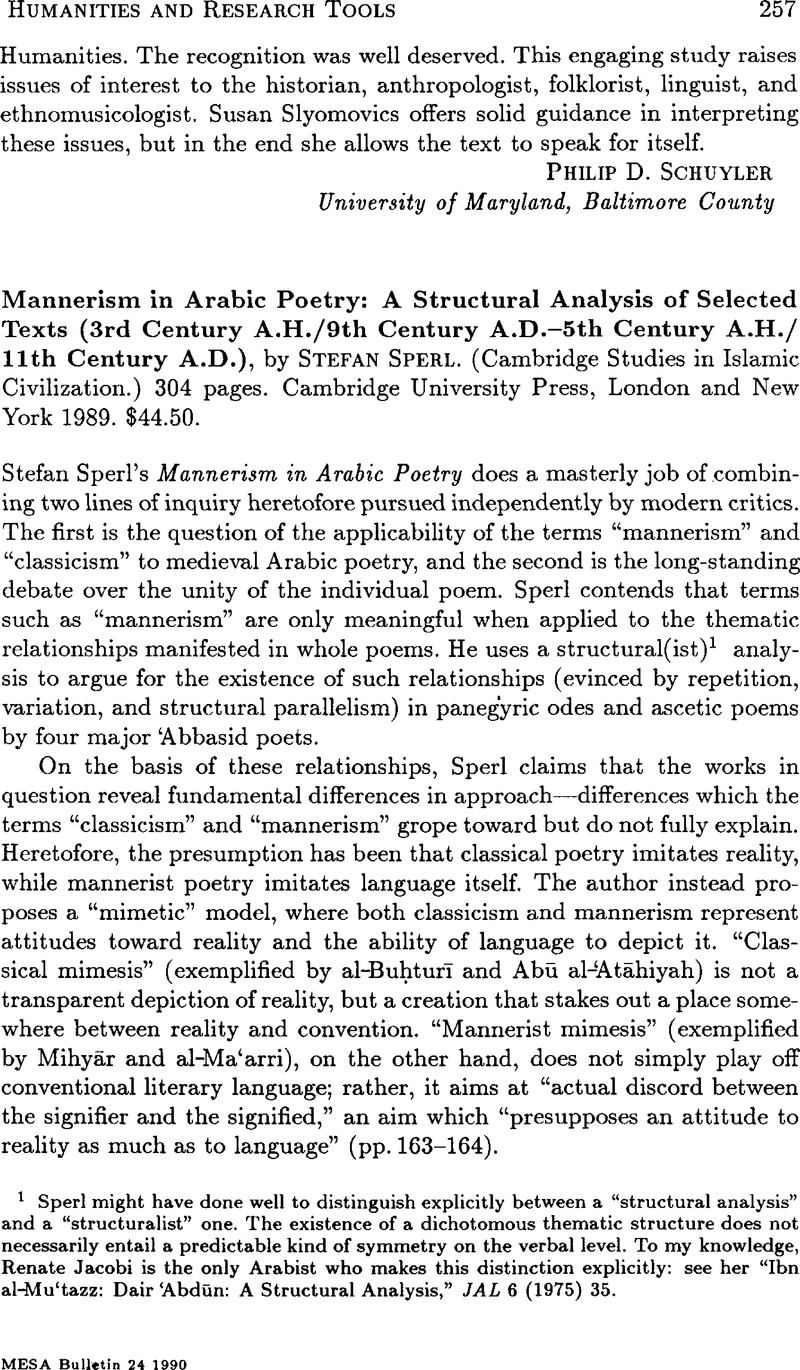No CrossRef data available.
Published online by Cambridge University Press: 09 March 2016

1 Speri might have done well to distinguish explicitly between a “structural analysis” and a “structuralist” one. The existence of a dichotomous thematic structure does not necessarily entail a predictable kind of symmetry on the verbal level. To my knowledge, Renate Jacobi is the only Arabist who makes this distinction explicitly: see her “Ibn aHUu’tazz: Dair ‘Abdūn: A Structural Analysis,” JAL 6 (1975) 35.
2 Mannerism includes appendices containing the texts and translations of the major poems discussed, as well as a glossary of Arabic technical terms. Following Sperl’s argument closely requires a good deal of flipping back to the appendices. I noted two errors, both in the translation of al-Buhturl’s poem: “sideboards” for “sideburns” on page 197, and “You do not cease…” as the translation of lã zilti (line 3). The Arabic is the negative of the optative, and should be translated “May you never cease.”